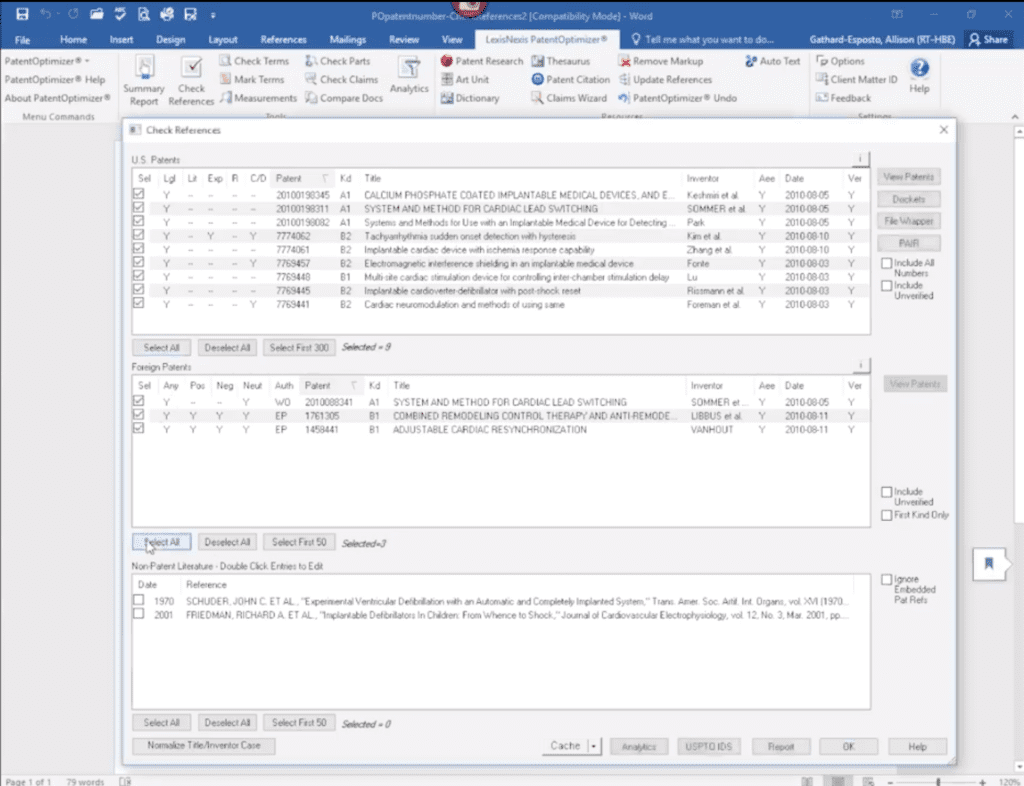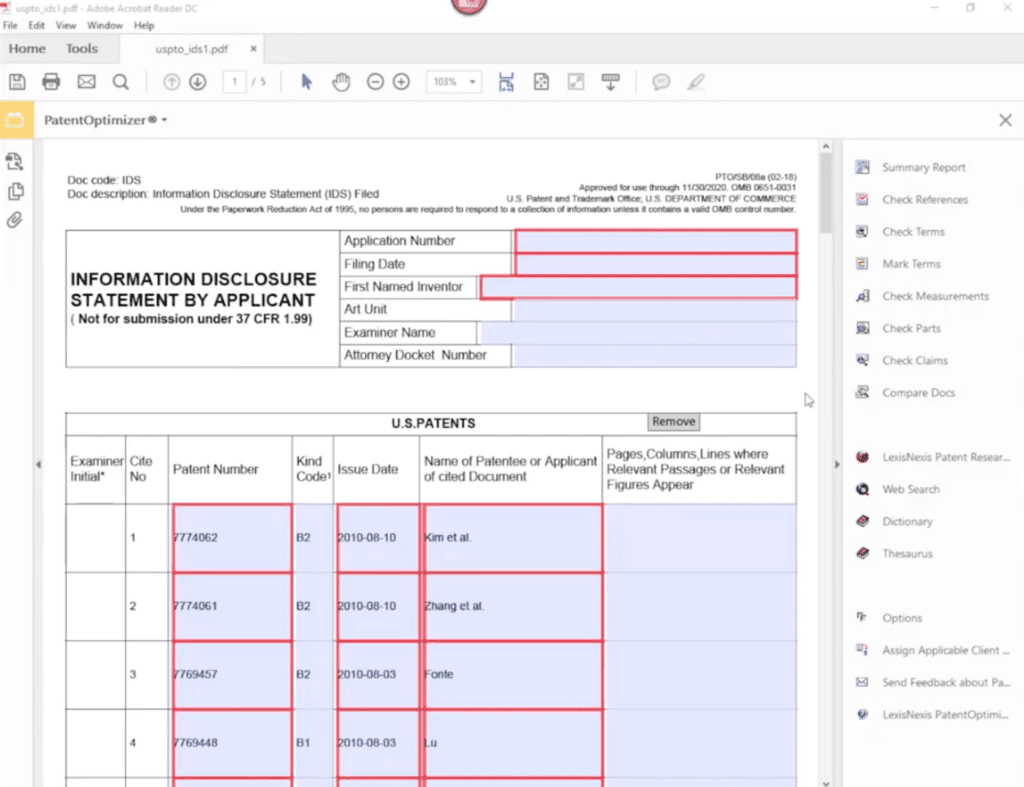How to Populate IDS Forms With LexisNexis PatentOptimizer®

Populate IDS Forms
Patent practitioners know that the time spent preparing paperwork before filing a new USPTO patent application is by no means insignificant. To produce a complete and compliant patent application, patent professionals must complete application datasheets, oaths, declarations, petitions, status claims, and other USPTO Information Disclosure Statement (IDS forms). Although each of these items can lead to plenty of extra hours in the office, in the eyes of many, the most notorious form–known for being both time-consuming and tedious to complete–is the Information Disclosure Statement.
The Information Disclosure Statement, also known as an “IDS,” is a submission to the USPTO that lists all the prior art or other information that could impact an invention’s patentability. A patent applicant and all members substantially involved in the application have a duty to disclose material references of any type. These can include issued patents, patent applications, books, scientific journal articles, or any other type of documentation. The applicant has a “duty of candor” to submit all applicable information to the best of their knowledge, with no data intentionally unincluded.
Because most patent applicants have a fair amount of research conducted before entering patent prosecution, an applicant could wind up with anywhere from a handful to dozens of references that must be meticulously listed on their IDS to fulfill their duty of disclosure. It is recommended to start the compilation of information as early on in the patent process as the later stages can create more complexity and cost in disclosure. Starting early and continuing to add documentation over a time period can save headaches and hassle. Then, early disclosure allows for the examiner to take the IDS forms into account.
Excess time spent producing an IDS is an excess expense for patent clients, especially because the requirements are often updated and the IDS form comes with three stages, each requiring additional work and cost The first stage is open within the first three months of the original filing and requires no forms or additional fees. If the form is not filed prior to the expiration, the form is considered within the second stage and requires a fee as well as an additional document. Upon the second stage’s expiry, which is variable, the existing fee and form are required in addition to an extra form (the CFR statement). All of this can be expensive and overwhelming if you are managing your IDS on your own. The LexisNexis PatentOptimizer® patent analysis and drafting tool can save patent applicants time and money by automatically generating IDS forms in only four simple steps.
Step 1: create a list of references
Begin your IDS form auto-population by creating a simple list in Word, Excel or PDF format. When presented with a list of reference numbers, such as a patent number or a publication number, PatentOptimizer® will go to work pulling each reference’s date, inventor information, and kind code from an online database. PatentOptimizer users even have options in formatting each reference, as the program recognizes several variations, including:
United States Patent Documents –
- U.S. Pat. No. 7769445
- United States Patent Number 7,769,445
- US Pat No 7769445
- Us pat no 7,769,445
- us pat no 7769445
- USP7769445
Foreign Patent Documents –
- WO2010088341
- EP1761305Ba
Non-Patent Literature –
- Friedman, Richard A. et al., “Implantable Defibrillators In Children:
- From Whence to Shock,” Journal of Cardiovascular Electrophysiology, vol. 12, No. 3, Mar. 2001, pp. 361-362.
Step 2: check references
In the reference list document, click the Check References button under the PatentOptimizer tab, and it will produce a dialog box presenting information from the references in your Step 1 list in three separate categories:
- 1) United States Patent Documents;
- 2) Foreign Patent Documents; and
- 3) Non-Patent References.
Be sure to include everyone who may be involved with your patent process along with any references used to stay in compliance with IDS regulations, but beware that the patent office may issue a fee for wasting their time for citing immaterial references.
Step 3: select references
In the PatentOptimizer dialog box, check the box next to each reference you would like to appear in your IDS form or click “Select All” to select all of the references in a specific category. PatentOptimizer will only gather information for each reference you have selected, so make sure your selections are complete before moving forward.

Step 4: finish with a click
In the bottom corner of the PatentOptimizer dialog box, click USPTO IDS. PatentOptimizer will use the most recent USPTO form and will auto-fill the document with all of your references. Quick and easy.

Learn how to create high-quality patent applications with PatentOptimizer.
Learn more about PatentOptimizer here.
Access the case study to see how one firm saves time and easily develops well-tailored, concise, high-quality patent applications.

Write high-quality patents with precision
Automate the review process and eliminate the need for manual draft reviews. Quickly and effectively check all parts of a patent application draft—from patent claims to patent drawings and everything in between.
